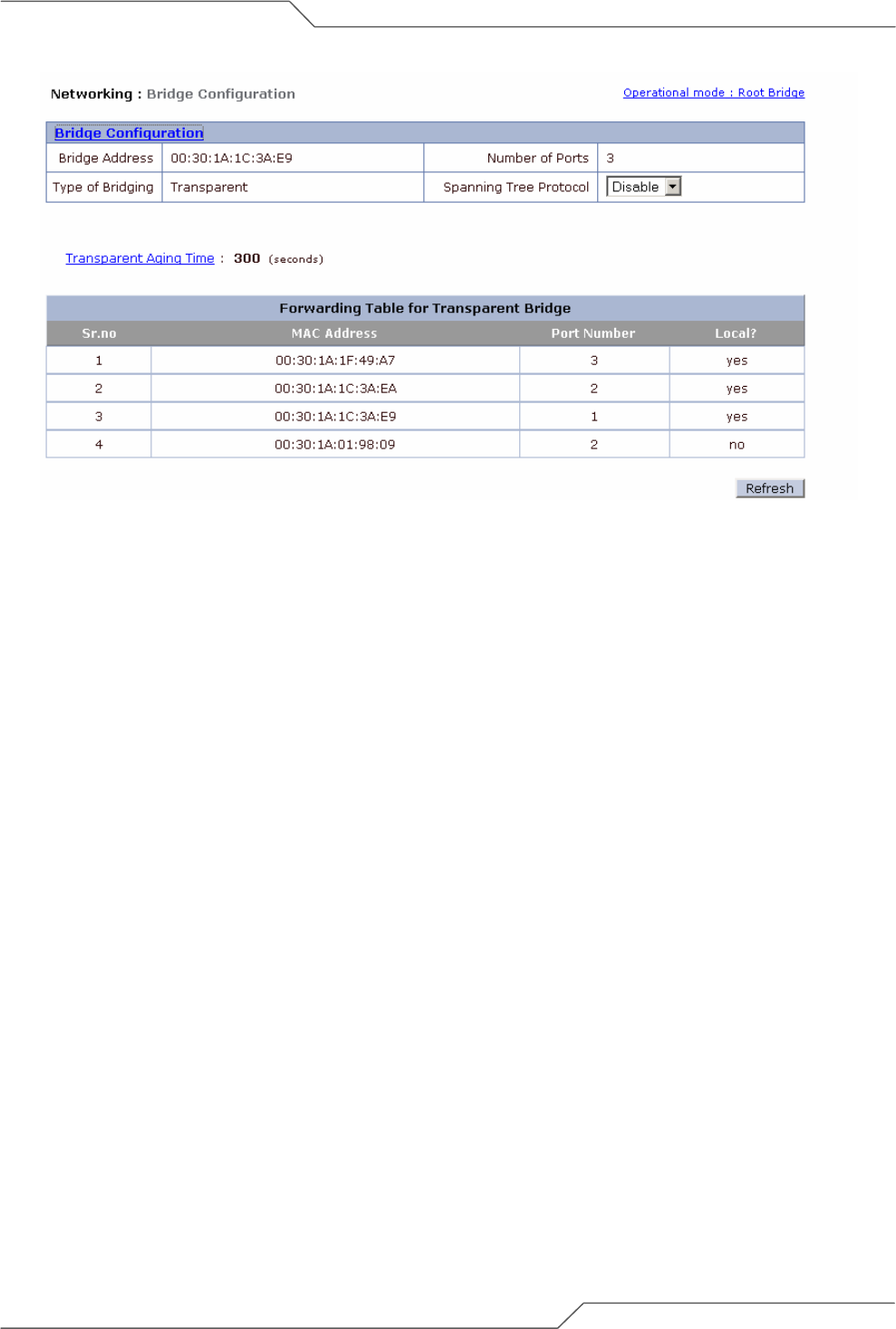
Page 31 of 80
intelligent wireless platform
airHaul™ Nexus User Guide
Figure 2-18 Bridge Configuration Information
2.6.4 Configuring Spanning Tree Protocol (STP)
STP is a Layer 2 link management protocol that provides path redundancy while preventing loops in
the network. For a Layer 2 Ethernet network to function properly, only one active path can exist
between any two redundant links.
To create a fault-tolerant network, there needs to be a loop-free path between all nodes in the
network. The Spanning Tree Algorithm calculates the best loop-free path throughout a Layer 2
network. Infrastructure devices such as wireless bridges and switches send and receive spanning tree
frames, called Bridge Protocol Data Units (BPDUs), at regular intervals. The devices do not forward
these frames but use them to construct the loop-free path.
Multiple active paths among end stations cause loops in the network. If a loop exists in the network,
end stations might receive duplicate messages. Infrastructure devices might also learn end-station
MAC addresses on multiple Layer 2 interfaces. Such conditions result in an unstable network.
STP defines a tree with a root bridge and a loop-free path from the root to all infrastructure devices in
the Layer 2 network.
STP forces redundant data paths into a standby (blocked) state. If a network segment in the spanning
tree fails and a redundant path exists, the Spanning Tree Algorithm recalculates the spanning tree
topology and activates the standby path.
When two interfaces on a device are part of a loop, the spanning tree port priority and path cost
settings determine which interface is put in the forwarding state and which is put in the blocking state.
The port priority value represents the location of an interface in the network topology and how well it is
located to pass traffic. The path cost value represents the media speed.


















